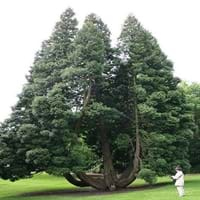Life Span
Perennial
Perennial
Type
Flowering Plants, Fruits, Trees
Needled or Scaled Evergreen
Origin
Central America, Europe, North America
Northwestern United States, Canada
Types
Not Available
Not available
Habitat
Hedge, Scrubs, Woods
Lowland, Moist Soils, Swamps
USDA Hardiness Zone
4-8
5-7
AHS Heat Zone
Not Available
8-1
Sunset Zone
Not Available
A3, 1a, 1b, 2a, 2b, 3a, 3b, 4, 5, 6, 7, 8, 9, 14, 15, 16, 17, 18, 19, 20, 21, 22, 23, 24
Habit
Not Available
Pyramidal
Flower Color
White
Light Yellow
Flower Color Modifier
Not Available
Bicolor
Fruit Color
Yellow
Brown, Sienna
Leaf Color in Spring
Dark Green
Dark Green
Leaf Color in Summer
Green
Dark Green
Leaf Color in Fall
Brown, Green, Light Yellow
Dark Green
Leaf Color in Winter
Not Available
Dark Green, Bronze
Leaf Shape
Oblong
Scale-like imbricate
Plant Season
Summer
Spring, Summer, Fall, Winter
Sunlight
Full Sun, Partial shade
Full Sun, Partial Sun
The pH of Soil
Neutral
Acidic, Neutral
Soil Drainage
Well drained
Well drained
Bloom Time
Fall, Summer
Spring
Tolerances
Drought
Pollution, Soil Compaction
Where to Plant?
Ground
Ground
How to Plant?
Grafting, Seedlings, Transplanting
Cuttings, Hardwood Cuttings, Rooted stem cutting, Seedlings
Plant Maintenance
Medium
Medium
Watering Requirements
Medium
Average Water Needs, Needs a lot of moisture in the growing season, when new, water every week
In Summer
Lots of watering
Lots of watering
In Spring
Moderate
Moderate
In Winter
Average Water
Average Water
Soil pH
Neutral
Acidic, Neutral, Alkaline
Soil Type
Loamy
Clay, Loam, Sand
Soil Drainage Capacity
Well drained
Well drained
Sun Exposure
Full Sun, Partial shade
Full Sun
Pruning
Prune when plant is dormant, Remove dead or diseased plant parts
Remove damaged leaves, Remove dead branches, Remove dead leaves
Fertilizers
All-Purpose Liquid Fertilizer
All-Purpose Liquid Fertilizer
Pests and Diseases
Aphids, Curculio occidentis, Japanese Beetles, Leaf Rollers, Leafminer, Mites, Red blotch, sawflies, Scale, Stink bugs
Armillaria root rot, Bark beetles
Plant Tolerance
Drought
Drought
Flowers
Yes
Insignificant
Flower Petal Number
Single
Not Available
Fragrant Bark/Stem
No
Yes
Foliage Texture
Medium
Fine
Foliage Sheen
Matte
Glossy
Attracts
Not Available
Not Available
Allergy
Digestive Problems, Respiratory problems
Asthma, contact allergic dermatitis, Urticaria
Aesthetic Uses
Showy Purposes
Not Used For Aesthetic Purpose
Beauty Benefits
Beautiful Skin
Not Available
Environmental Uses
Food for birds
Air purification
Medicinal Uses
Anthelmintic, Antibacterial, Astringent, Hypnotic, Laxative, Refrigerant
Bronchitis, Cold, Cough, Fever, Sore throat
Part of Plant Used
Fruits
Branch, Inner Bark, Leaves, Wood
Other Uses
Edible syrup, Jam, Jelly, Used As Food
Dugout canoes, Making deodorants, Medicinal oil, Paper pulp, Pulp can be used to make rope place mats and other goods, Used as an insecticide, Used to make baskets
Used As Indoor Plant
No
No
Used As Outdoor Plant
Yes
Yes
Garden Design
Not Available
Feature Plant, Hedges, Screening / Wind Break
Botanical Name
Malus sylvestris
THUJA plicata
Common Name
European crab apple
Giant Arborvitae, Green Giant Arborvitae, Western Arborvitae, Western Red Cedar
In Hindi
european crab apple
Pacific redcedar
In German
Der Holzapfel, Europäischer Wildapfel
Riesen-Lebensbaum
In French
Le Boquettier, le Pommier sauvage ou Pommier des bois
Thuja plicata
In Spanish
Malus sylvestris, el Manzano silvestre, manzano silvestre europeo
Thuja plicata
In Greek
Ευρωπαϊκή μήλο καβουριών
Thuja plicata
In Portuguese
Malus sylvestris
Thuja plicata
In Polish
Jabłoń dzika
Żywotnik olbrzymi
In Latin
european crab apple
Thuja plicata
Phylum
Magnoliophyta
Pinophyta
Class
Magnoliopsida
Pinopsida
Family
Rosaceae
Cupressaceae
Clade
Angiosperms, Eudicots, Rosids
Not Available
Tribe
Not Available
Not Available
Subfamily
Not Available
Not Available
Number of Species
Not Available
Not Available
Importance of European Crab Apple and Western Red Cedar
Want to have the most appropriate plant for your garden? You might want to know the importance of European Crab Apple and Western Red Cedar. Basically, these two plants vary in many aspects. Compare European Crab Apple and Western Red Cedar as they differ in many characteristics such as their life, care, benefits, facts, etc. Every gardener must at least have the slightest clue about the plants he wants to plant in his garden. Compare their benefits, which differ in many ways like facts and uses. The medicinal use of European Crab Apple is Anthelmintic, Antibacterial, Astringent, Hypnotic, Laxative and Refrigerant whereas of Western Red Cedar is Bronchitis, Cold, Cough, Fever and Sore throat. European Crab Apple has beauty benefits as follows: Beautiful Skin while Western Red Cedar has beauty benefits as follows: Beautiful Skin.
Compare Facts of European Crab Apple vs Western Red Cedar
How to choose the best garden plant for your garden depending upon its facts? Here garden plant comparison will help you to solve this query. Compare the facts of European Crab Apple vs Western Red Cedar and know which one to choose. As garden plants have benefits and other uses, allergy is also a major drawback of plants for some people. Allergic reactions of European Crab Apple are Digestive Problems and Respiratory problems whereas of Western Red Cedar have Asthma, contact allergic dermatitis and Urticaria respectively. Having a fruit bearing plant in your garden can be a plus point of your garden. European Crab Apple has showy fruits and Western Red Cedar has no showy fruits. Also European Crab Apple is flowering and Western Red Cedar is not flowering . You can compare European Crab Apple and Western Red Cedar facts and facts of other plants too.





